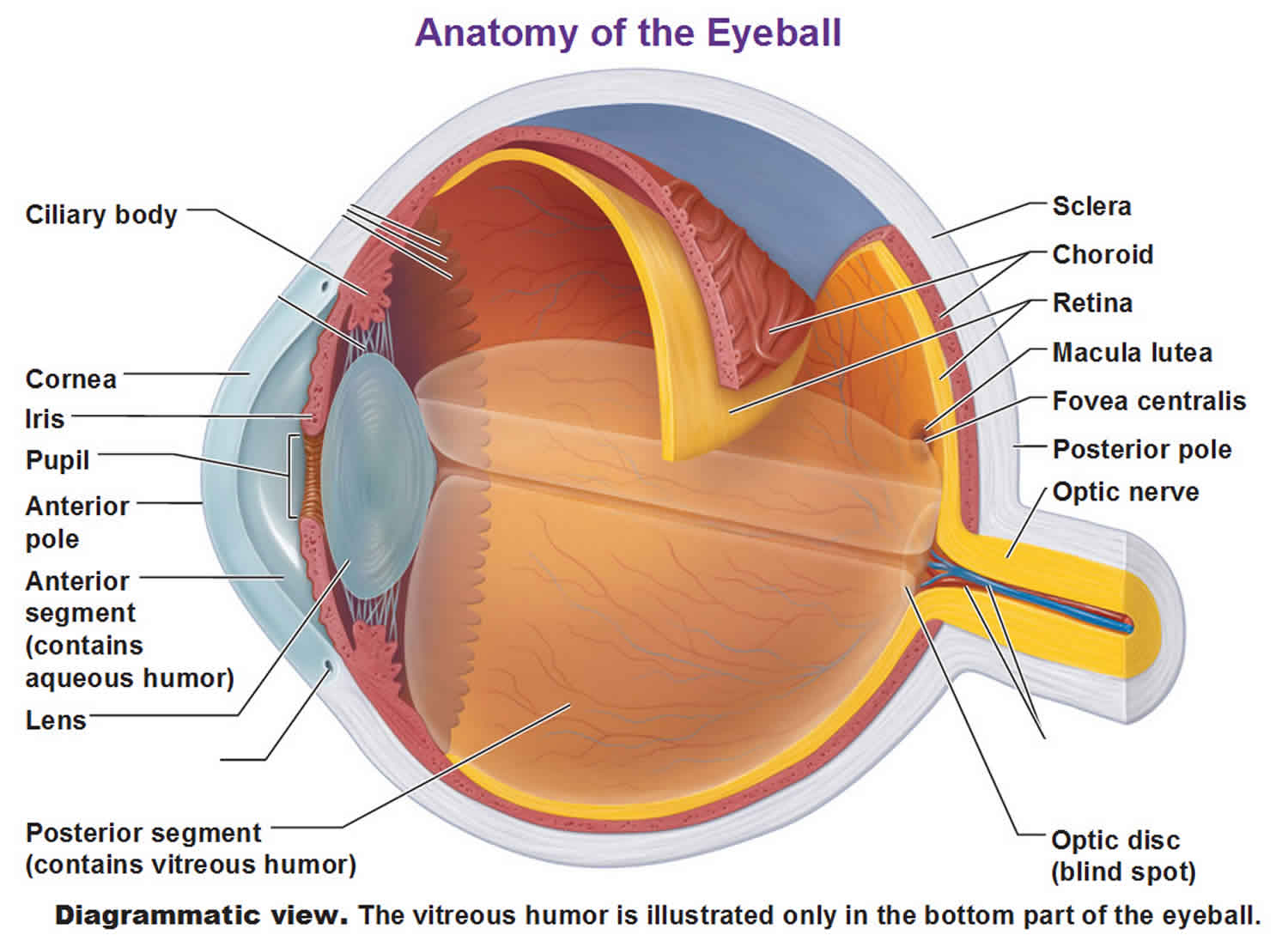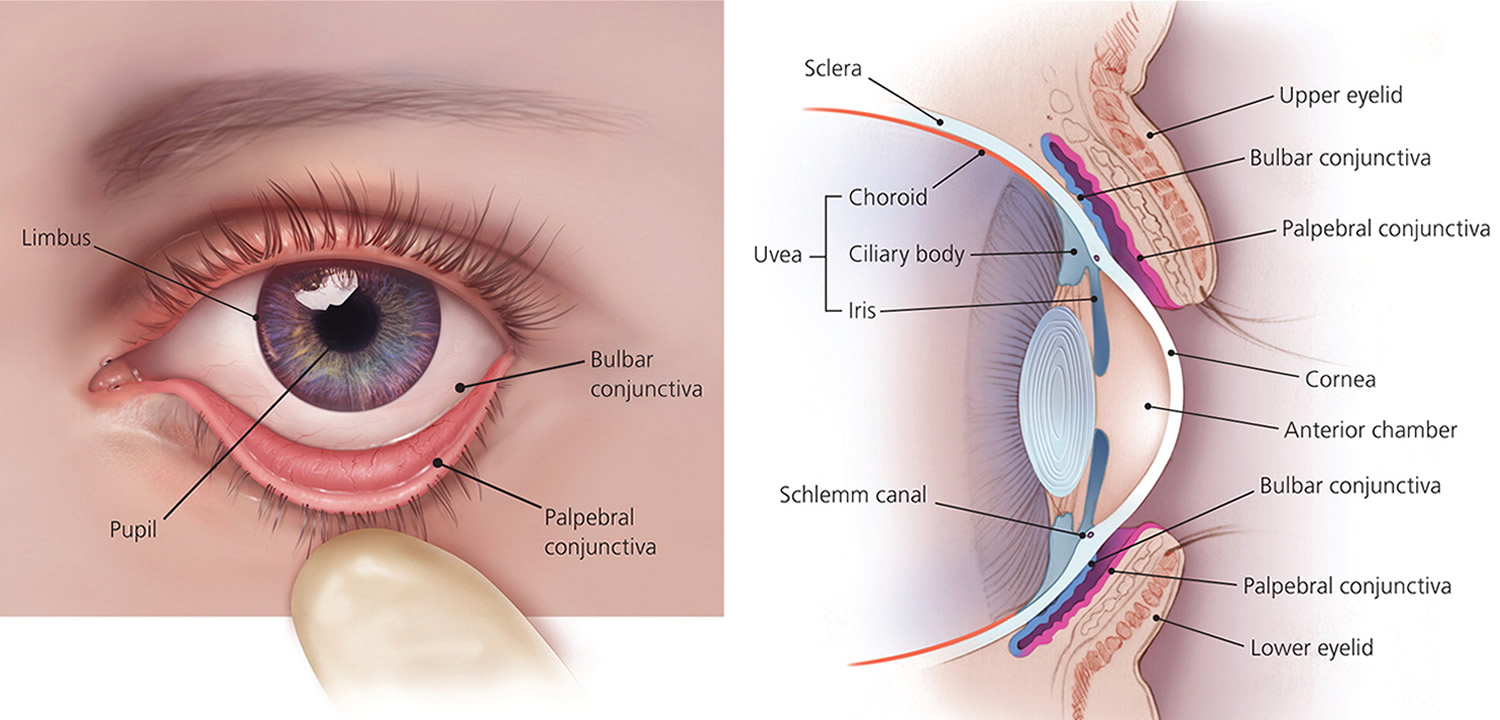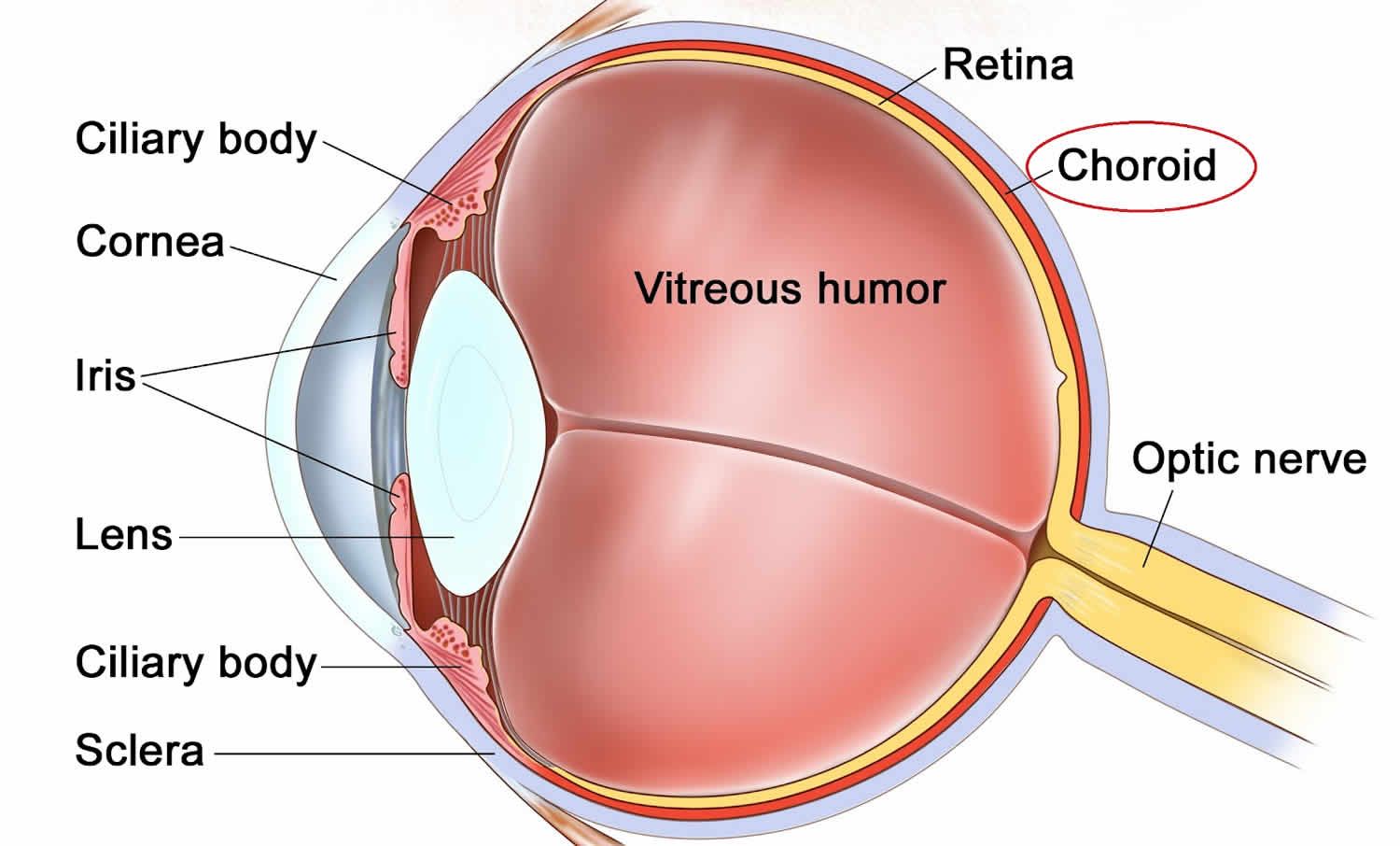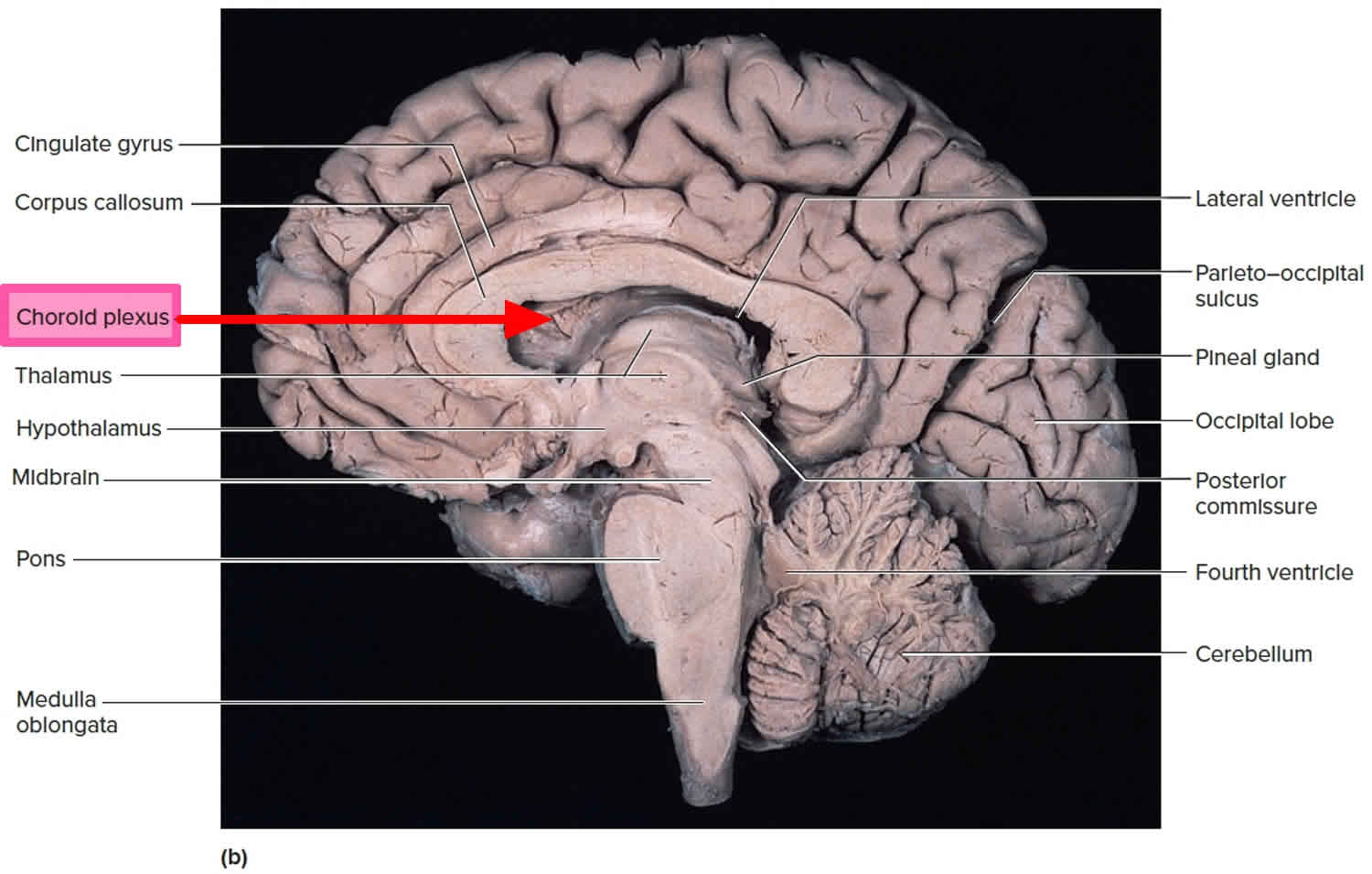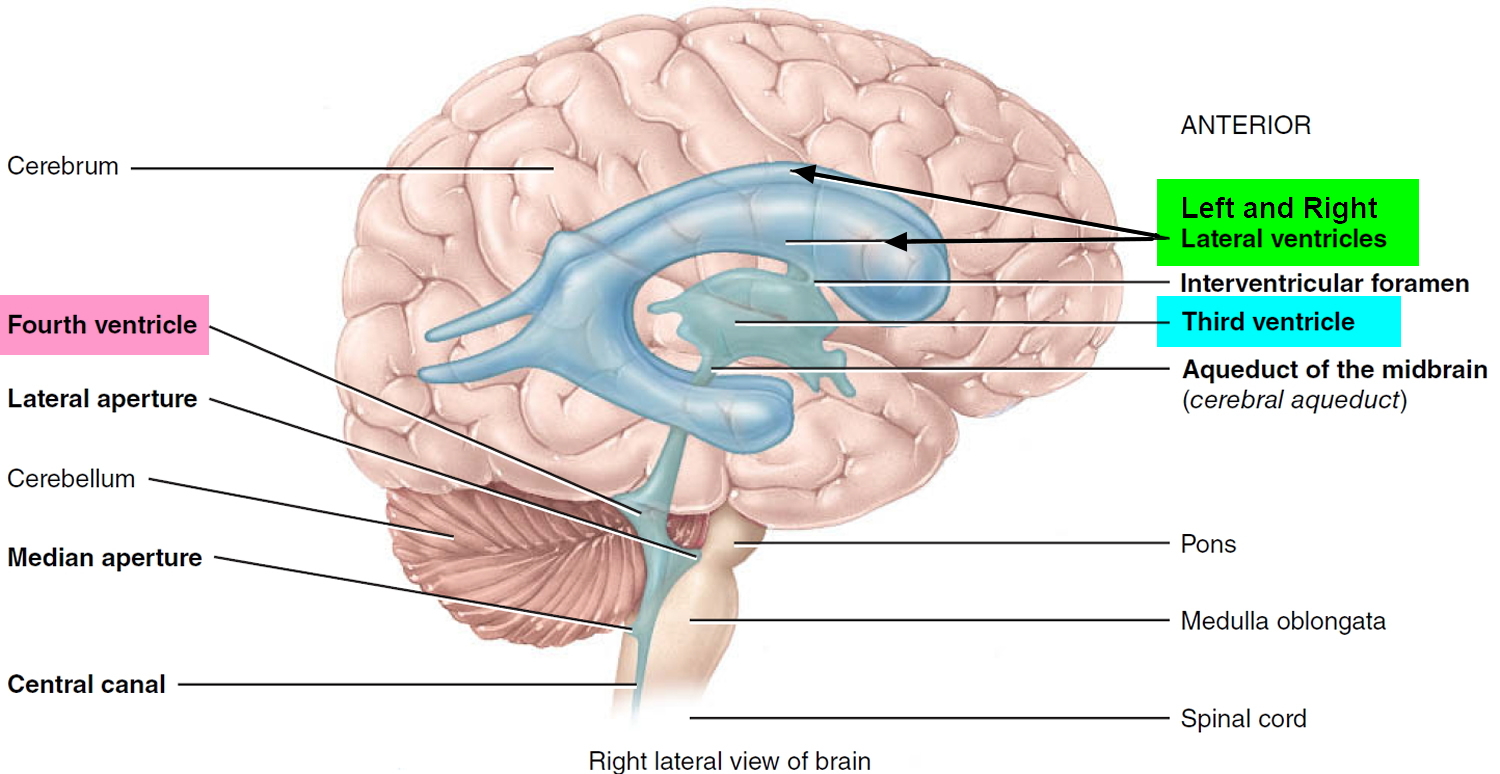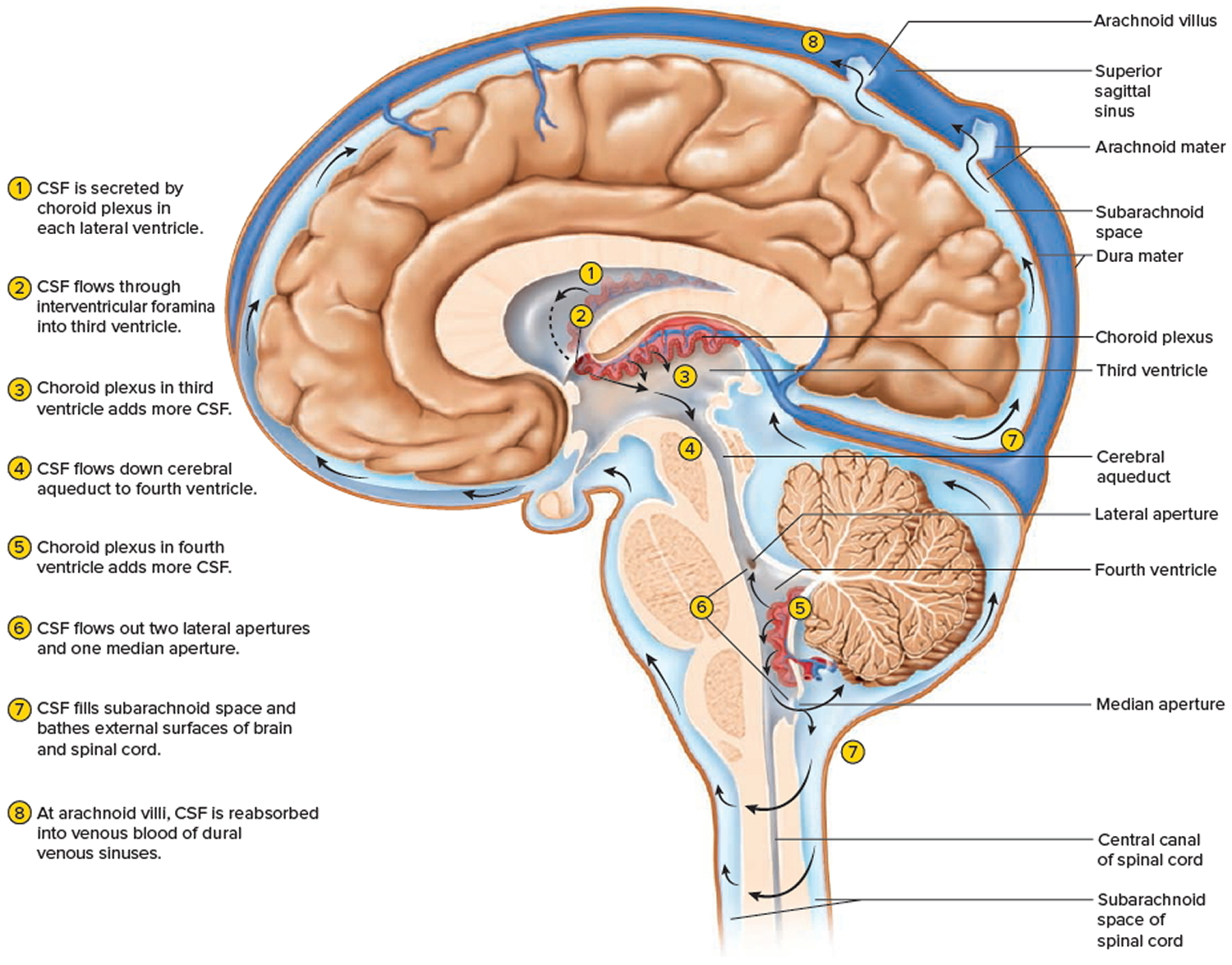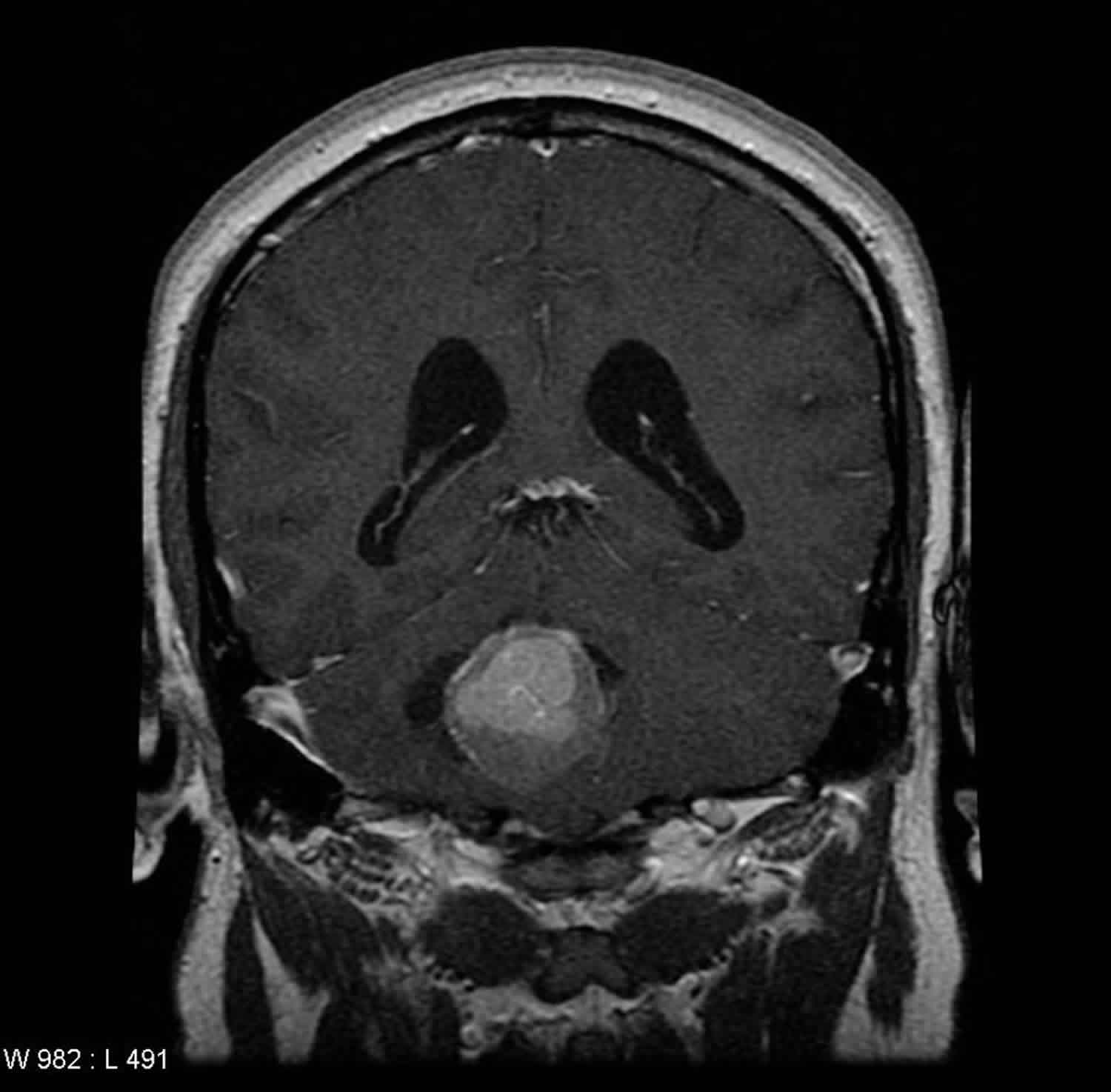Contents
- What is choroid
- Choroid of the eye function
- What is choroid plexus
- Choroid plexus function
- Choroid plexus tumors
- What are the grades of choroid plexus tumors?
- Where do choroid plexus tumors form?
- Do choroid plexus tumors spread?
- What are the symptoms of a choroid plexus tumor?
- What are the treatment options for choroid plexus tumors?
- What do choroid plexus tumors look like on an MRI?
- Choroid plexus carcinoma
- Choroid plexus papilloma
- Choroid plexus cyst
What is choroid
The choroid is the middle layer of the eye that contains blood vessels and connective tissue between the sclera (the white of the eye) and the retina (at the back of the eye). Choroid is part of the uvea and supplies nutrients to the inner parts of the eye. Inflammation of the choroid is called choroiditis.
Choroid anatomy
The choroid is responsible for the 1/3 external vascular support of the retina, its functional and structural integrity is essential for retinal function, a compromised volume or flow in its circulation could result in photoreceptor and retinal pigment epitelium (RPE) dysfunction and death. The choroid blood supply derives from branches of the anterior and posterior ciliary arteries.
The choroid has a 5 layer histological composition from inner (retinal side) to outer (scleral side):
- Bruch Membrane
- Ruysch Layer (Choriocapillar)
- Sattler Layer (Layer of medium diameter blood vessels)
- Haller´s Layer (Layer of large diameter blood vessels)
- Suprachoroidea (Transitional zone between choroid and sclera)
The choriocapillaris has large diameter capillaries (20-25 Mm), also it has fenestrations of 700-800 nm diameter, wich allows more rapid transport and of bigger molecules.
Figure 1. Eye anatomy
Choroid of the eye function
The choroid of the eye has several functions: Its vasculature is the major supply for the outer retina; impairment of the flow of oxygen from choroid to retina may cause Age-Related Macular Degeneration. The choroidal blood flow, which is as great as in any other organ, may also cool and warm the retina. In addition to its vascular functions, the choroid contains secretory cells, probably involved in modulation of vascularization and in growth of the sclera. Finally, the dramatic changes in choroidal thickness move the retina forward and back, bringing the photoreceptors into the plane of focus, a function demonstrated by the thinning of the choroid that occurs when the focal plane is moved back by the wearing of negative lenses, and, conversely, by the thickening that occurs when positive lenses are worn.
What is choroid plexus
Choroid plexus is a network of blood capillaries in the walls of the ventricles of your brain. In human brains, the choroid plexus produces 400–600 ml of cerebrospinal fluid (CSF) each day, which is enough to turn over the cerebrospinal fluid (CSF) 3–4 times 1. The CSF then flows from the lateral ventricles to the third and fourth ventricles, and then into the subarachnoid space of the brain and spinal cord via openings (foramena) below the cerebellum (Figures 4 and 5). The CSF returns to the peripheral circulation via resorption by arachnoid granulations in venous sinuses of the brain 2. The choroid plexus-cerebrospinal fluid (CSF) therefore represents an independent circulatory system for the brain and spinal cord.
Cerebrospinal fluid (CSF) is a rich source of proteins, lipids, hormones, cholesterol, glucose, microRNAs, and many other molecules and metabolites that influence a multitude of CNS functions, including neurogenesis in embryos and adults 3. Spurred by the clinical utility of CSF biomarkers for Alzheimer’s disease, there is tremendous interest in CSF biomarker discovery for the diagnosis and management of CNS disorders, and the ability to derive secretory choroid plexus cells from embryonic stem cells sets the stage for unique choroid plexus-based strategies for treating a host of CNS diseases.
Figure 3. Choroid plexus
Figure 4. Ventricles of the brain
Figure 5. Cerebrospinal fluid formation, absorption and circulation around and within the brain
Choroid plexus function
The choroid plexus has the highly specialized function of producing cerebrospinal fluid (CSF). It is anatomically localized to the parenchymal/ventricular junction in all four ventricles. The choroid plexus itself is derived from the ventricular epithelium along certain segments of the neural tube, and there is a common ontogeny between choroid epithelium and cells of glial origin which can lead to diagnostic confusion. Tumors arising from the choroid plexus can display a benign or malignant phenotype, but conversion to a malignant phenotype is a rare event. Surgical resection of benign choroid plexus papillomas is often curative while choroid plexus carcinomas require adjuvant therapy and recurrence is common.
Choroid plexus tumors
Choroid plexus tumors are primary central nervous system (CNS) tumors. This means they begin in the brain or spinal cord. Choroid plexus epithelial cells are the presumed cells of origin for most choroid plexus tumors, although rare intraventricular meningiomas are thought to arise from neoplastic meningeal cells in choroid plexus stroma 1.
Choroid plexus tumors occur in both children and adults, but are more common in children in the first year of life. Choroid plexus tumors are rare in children and adults, accounting for <2% of all pediatric brain tumors 4, they are most commonly observed in infants (accounting for 10–20% of brain tumors in infants in their first year; median age of diagnosis, 3.5 years) 5. Choroid plexus tumors occur slightly more often in males than females.
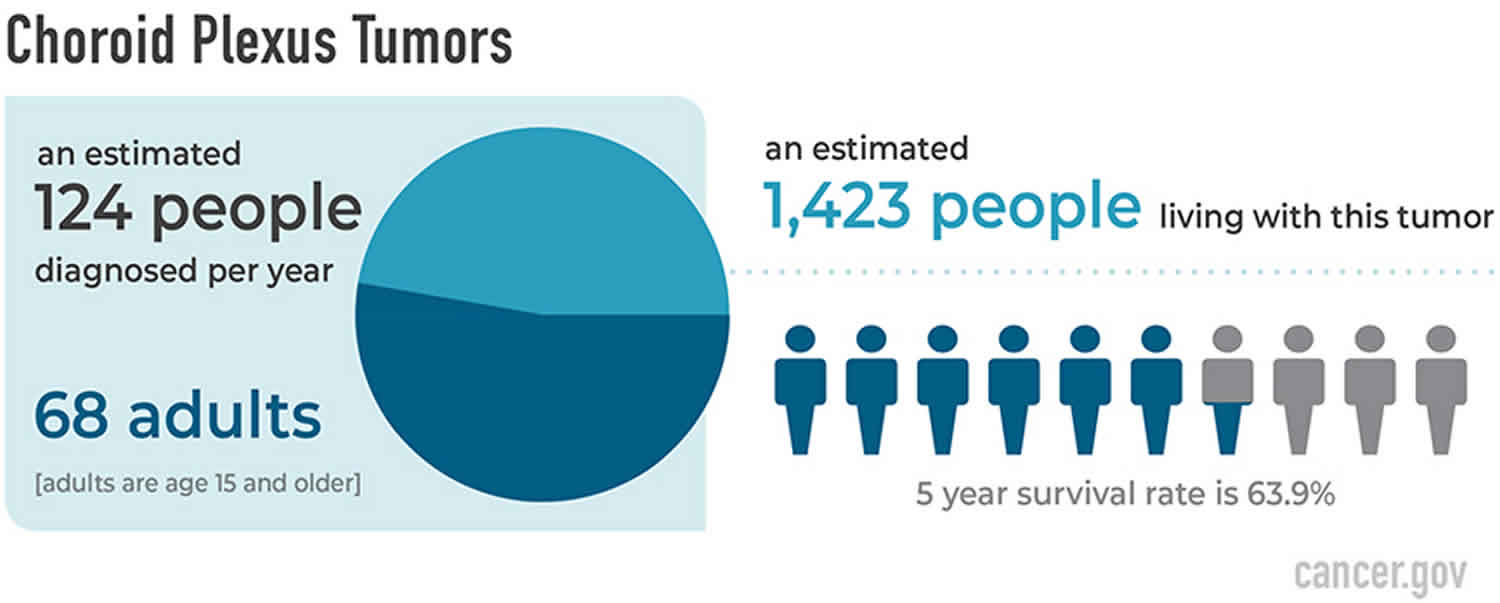 [Source 6 ]
[Source 6 ]The cause of most choroid plexus tumors is not known. Genetic changes have been linked to the formation of some choroid plexus tumors. Rarely, certain gene changes that can be passed down through families have been linked to a higher chance of developing choroid plexus carcinomas.
Efforts to assemble the critical mass of patients and experts necessary to advance cures of choroid plexus tumors have proved relatively unsuccessful, and treatment options and survival rates remain limited 7.
What are the grades of choroid plexus tumors?
Choroid plexus tumors are grouped in three grades based on their characteristics.
- Grade I choroid plexus papilloma are low grade tumors. This means the tumor cells grow slowly.
- Grade II atypical choroid plexus papilloma are mid-grade tumors. This means the tumors have a higher chance of coming back after being removed.
- Grade III choroid plexus carcinoma are malignant (cancerous). This means they are fast-growing tumors that tend to invade nearby tissue.
Where do choroid plexus tumors form?
Choroid plexus tumors arise from a structure in the brain called the choroid plexus. It lines the ventricles (fluid-filled cavities) of the brain and its primary function is to produce cerebrospinal fluid (CSF). Choroid plexus tumors almost always form within the ventricles. They can also form in other regions of the CNS.
Do choroid plexus tumors spread?
Choroid plexus tumors can spread to other areas of the central nervous system (CNS) through CSF.
What are the symptoms of a choroid plexus tumor?
Symptoms related to choroid plexus tumors depend on the tumor’s location. People with choroid plexus tumors may have increased pressure within the skull due to the production of too much CSF or blockage of its normal flow. This problem is known as hydrocephalus. Signs and symptoms of hydrocephalus may include nausea, vomiting, irritability, headaches, blurred or double vision, a strong desire to sleep, and seizures.
What are the treatment options for choroid plexus tumors?
The first treatment for choroid plexus tumors is surgery, if possible. The goal of surgery is to obtain tissue to determine the tumor type and to remove as much tumor as possible without causing more symptoms for the person.
Treatments after surgery may include radiation, chemotherapy, or clinical trials. Clinical trials, with new chemotherapy, targeted therapy, or immunotherapy drugs, may also be available and can be a possible treatment option. Treatments are decided by the patient’s healthcare team based on the patient’s age, remaining tumor after surgery, tumor type, and tumor location.
What do choroid plexus tumors look like on an MRI?
Choroid plexus tumors usually appear in the ventricles of the brain. They usually have irregular borders and a “cauliflower-like” appearance. The tumors usually enhance with contrast and sometimes many tumors can be seen in a different region of the CNS. Choroid plexus carcinomas may also have some swelling around them, which can be seen during an MRI. Hydrocephalus is almost always seen, too.
Figure 5. Choroid plexus carcinoma
Footnote: Child age 3 months. MRI of choroid plexus carcinoma demonstrating the mass with intraventricular and leptomeningeal spread. The 4th ventricle is now trapped and ballooned. The child passed away shortly after this scan.
[Source 8 ]Choroid plexus carcinoma
Choroid plexus carcinomas are malignant neoplasms arising from the choroid plexus. They are classified as a WHO grade III tumor and while there is considerable overlap in imaging characteristics it carries significantly poorer prognosis than both WHO grade II atypical choroid plexus papilloma, and WHO grade I choroid plexus papilloma.
Pathology
Choroid plexus carcinomas originate from choroid plexus epithelium and typically arise de novo; rarely they may represent malignant transformation of a pre-existing choroid plexus papilloma 9.
Epidemiology
Choroid plexus carcinomas occur predominantly in children, typically in the first 5 years of life. They are rare, far less common than choroid plexus papillomas (which account for 80% of primary choroid plexus tumors), representing only 1-4% of pediatric brain tumors 10.
Clinical presentation
As is the case with choroid plexus papillomas, presentation usually is as a result of hydrocephalus. Symptoms include increasing head circumference and headaches. Papilloedema may be visible on fundoscopy. In addition, choroid plexus carcinomas have a tendency to invade the adjacent brain and thus may present with focal neurological dysfunction 11.
Choroid plexus carcinoma associations
- Li-Fraumeni syndrome 10
- Aicardi syndrome 12
- Simian virus 40 (SV40) on the basis of this virus’ DNA having been identified in up to 50% of cases 10
Treatment and prognosis
Choroid plexus carcinomas are rapidly growing tumors with a 40% 5-year survival. TP53 mutation, brain invasion and CSF seeding are considered poor prognostic factors 10.
Surgical en-bloc resection is the mainstay of treatment and can result in a cure, achieved in as many as 50% of cases, but this result has only been reported in some selected series 10. In general, survival seems to be much worse than this, and hinges upon the ability to achieve gross complete macroscopic resection. In such cases, a 5-year survival of up to 86% can be achieved. In cases where resection is incomplete, 5-year survival is much lower 26% 13. Both radiotherapy and chemotherapy are used 10.
Choroid plexus papilloma
Choroid plexus papillomas are an uncommon, benign (WHO grade I) neuroepithelial intraventricular tumor which can occur in both the pediatric (more common) and adult population.
On imaging, choroid plexus papillomas are usually identified in the fourth ventricle in adults and in the lateral ventricles in the pediatric population. They commonly present as a solid vascular tumor with vivid frond-like enhancement pattern. In a quarter of cases, speckled calcifications are present.
Figure 6. Choroid plexus papilloma
Footnote: A vividly but heterogeneously enhancing mass in the right side of the 4th ventricle is associated with significant surrounding edema and mass effect. There is ventricular enlargement consistent with non-communicating hydrocephalus.
[Source 14 ]Pathology
Choroid plexus papillomas are WHO grade I lesions, with a low mitotic rate (<2 mitoses are present per 10 high-power field), and to a lesser degree histological features, distinguishing them from atypical choroid plexus papillomas (WHO grade II) and choroid plexus carcinomas (WHO Grade III) 15.
Epidemiology
Overall these choroid plexus papillomas account for approximately 1% of all brain tumors, 2-6% of all pediatric brain tumors and 0.5% of the adult brain tumors. Choroid plexus papillomas are, however, disproportionately represented in brain tumors in children under the age of 1 10. Approximately 85% of all choroid plexus papillomas occur in children under the age of 5 years 16.
Interestingly, the age distribution is very different for infratentorial (fourth ventricle) versus supratentorial (usually lateral ventricle). The vast majority of supratentorial tumours are seen in children, whereas posterior fossa tumours are evenly distributed at all age groups, including the elderly 17.
Clinical presentation
Hydrocephalus is very common, seen in over 80% of cases 16. Although the exact mechanism remains uncertain, it is believed to be due to a combination of CSF overproduction and decreased arachnoid granulation resorption.
Choroid plexus papilloma associations
An association with Aicardi syndrome and von Hippel-Lindau disease (as well as the more frequently associated hemangioblastoma) is recognized.
Treatment and prognosis
Total excision should be the aim of therapy and is curative in a vast majority of cases. Overall there is 90% 1-year-survival, and 77% 5-year-survival 12.
CSF seeding is uncommon in choroid plexus papillomas, but far more frequently seen in higher grade tumors atypical choroid plexus papillomas and choroid plexus carcinomas 12.
Choroid plexus cyst
Antenatal choroid plexus cysts are benign and are often transient typically resulting in utero from an infolding of the neuroepithelium.
They should not be confused with adult choroid plexus cysts (which are very commonly found at autopsy and likely degenerative), large intraventricular simple cysts (some of which arise from the choroid plexus) or choroid plexus xanthogranulomas 18.
Pathology
The cysts have no epithelial lining, and as such these are not true cysts, but rather spaces within the choroid plexus filled with clear fluid (CSF) and cellular debris. They can range in size from a few millimeters to 1-2 cm.
Location
Typically seen at the level of atria involving the lateral ventricles.
Choroid plexus cyst complications
- Obstructive hydrocephalus: rare but can happen if the choroid plexus cyst is large
Epidemiology
Choroid plexus cyst estimated occurrence is ~2% (range 0.2-3.5%) of pregnancies 19.
Choroid plexus cyst associations
There is a soft association with aneuploidy (therefore sometimes considered as a soft marker), however, the vast majority of cases have no associated abnormality.
Recognized associations however include:
- Trisomy 18
- ~1% if no other abnormality
- ~4% if there are other anomalous features
- the increased risk is essentially the same whether there is a single choroid plexus cyst or multiple cysts
- choroid plexus cyst, however, may be seen in up to 50% of those with trisomy 18
- Trisomy 21
- Klinefelter syndrome
- Aicardi syndrome 20
Treatment and prognosis
They generally disappear by 26-28 weeks in utero and are of no significance in most cases 1-2. However, if one is seen in antenatal imaging it would warrant careful surveillance of the rest of the fetus due to weak associations with karyotypic abnormalities. Choroid plexus cysts are of concern if the cysts are large (>1 cm) (controversial evidence), bilateral, multiple and associated with structural abnormalities when the maternal age is equal to or greater than 32 years, or if the maternal serum screening results are abnormal.
Amniocentesis is suggested when there are other abnormalities or when there is a high risk for trisomy 18.
The cysts themselves resolve in the 3rd trimester and are generally not associated with abnormal CNS development. It is usually the associated conditions that are of concern.
Adult choroid plexus cyst
Adult choroid cysts and xanthogranulomas should not be confused with antenatal choroid cysts (described above), which usually regress by birth. Adult choroid cysts are found in adults, and are relatively common (~7%) 21, identified most commonly in older patients 22. Choroid plexus xanthogranulomas are common, incidental and almost invariably asymptomatic lesions. It is unclear in much of the literature whether they represent a distinct entity from adult choroid plexus cysts, but they share imaging characteristics and are only likely to be distinguishable on autopsy. As the clinical history is the same, the distinction, at least from a radiologist’s and clinician’s point of view, is largely irrelevant.
Pathology
These lesions represent desquamated epithelium into the lumen of choroid cysts within the choroid plexus. As a result cholesterol/lipid rich content of epithelial cells accumulates, sometimes combined with blood products, and results in a xanthomatous response, as this material is ingested by mononuclear cells 22.
Clinical presentation
In almost all cases these lesions are asymptomatic. Rarely they are large enough to cause local mass effect or may be complicated by hemorrhage 23.
Treatment and prognosis
Adult choroid cysts and xanthogranulomas require no treatment. They do not require histological confirmation and no follow up is needed.
- The Choroid Plexus and Cerebrospinal Fluid: Emerging Roles in Development, Disease, and Therapy. Maria K. Lehtinen, Christopher S. Bjornsson, Susan M. Dymecki, Richard J. Gilbertson, David M. Holtzman, Edwin S. Monuki. Journal of Neuroscience 6 November 2013, 33 (45) 17553-17559; DOI: 10.1523/JNEUROSCI.3258-13.2013 http://www.jneurosci.org/content/33/45/17553[↩][↩]
- Segal M (2005) in The blood–cerebrospinal fluid barrier, Fluid compartments of the central nervous system, eds Zheng W, Chodobski A (Taylor and Francis, Boca Raton, FL), pp 83–99.[↩]
- Burgos KL, Javaherian A, Bomprezzi R, Ghaffari L, Rhodes S, Courtright A, Tembe W, Kim S, Metpally R, Van Keuren-Jensen K. (2013) Identification of extracellular miRNA in human cerebrospinal fluid by next-generation sequencing. Rna 19:712–722, doi:10.1261/rna.036863.112[↩]
- Paulus W, Brandner S. (2007) in WHO classification of tumours of the central nervous system, Choroid plexus tumors, eds Louis DN, Ohgaki H, Wiestler OD, Cavenee WK (IARC Press, Lyon, France), pp 81–85.[↩]
- Safaee M, Oh MC, Bloch O, Sun MZ, Kaur G, Auguste KI, Tihan T, Parsa AT. (2013) Choroid plexus papillomas: advances in molecular biology and understanding of tumorigenesis. Neuro Oncol 15:255–267, doi:10.1093/neuonc/nos289[↩]
- Choroid plexus tumors. https://www.cancer.gov/nci/rare-brain-spine-tumor/tumors/choroid-plexus-tumors[↩]
- Lafay-Cousin L, Strother D. (2009) Current treatment approaches for infants with malignant central nervous system tumors. Oncologist 14:433–444, doi:10.1634/theoncologist.2008-0193[↩]
- Choroid plexus carcinoma. https://radiopaedia.org/cases/choroid-plexus-carcinoma-1[↩]
- Tortori-Donati P. Pediatric neuroradiology. Springer. (2005) ISBN:3540410775[↩]
- Custodio G, Taques GR, Figueiredo BC et-al. Increased incidence of choroid plexus carcinoma due to the germline TP53 R337H mutation in southern Brazil. PLoS ONE. 22;6 (3): e18015. doi:10.1371/journal.pone.0018015[↩][↩][↩][↩][↩][↩]
- Grygotis LA, Chew FS. Choroid plexus carcinoma of the lateral ventricle. AJR Am J Roentgenol. 1997;169 (5): 1400. https://www.ajronline.org/doi/pdf/10.2214/ajr.169.5.9353468[↩]
- Louis DN, Ohgaki H, Wiestler OD, Cavenee WK “WHO Classification of Tumours of the Central Nervous System. 4th Edition Revised” ISBN: 9789283244929[↩][↩][↩]
- Berger C, Thiesse P, Lellouch-Tubiana A et-al. Choroid plexus carcinomas in childhood: clinical features and prognostic factors. Neurosurgery. 1998;42 (3): 470-5.[↩]
- Choroid plexus papilloma. https://radiopaedia.org/cases/choroid-plexus-papilloma[↩]
- Smith A, Smirniotopoulos J, Horkanyne-Szakaly I. From the Radiologic Pathology Archives: Intraventricular Neoplasms: Radiologic-Pathologic Correlation. Radiographics. 2013;33 (1): 21-43. https://pubs.rsna.org/doi/full/10.1148/rg.331125192[↩]
- Kornienko VN, Pronin IN. Diagnostic Neuroradiology. Springer Verlag. (2009) ISBN:3540756523[↩][↩]
- J E A Wolff, M Sajedi, R Brant, M J Coppes, R M Egeler. Choroid plexus tumours. British Journal of Cancer. 87 (10): 1086. doi:doi:10.1038/sj.bjc.6600609[↩]
- Kaufman HH. Cerebrospinal Fluid Collections. Thieme. (1997) ISBN:1879284480[↩]
- Nyberg DA, McGahan JP, Pretorius DH. Diagnostic imaging of fetal anomalies. Lippincott Williams & Wilkins. (2003) ISBN:0781732115[↩]
- Naeini RM, Yoo JH, Hunter JV. Spectrum of choroid plexus lesions in children. AJR Am J Roentgenol. 2009;192 (1): 32-40. doi:10.2214/AJR.08.1128[↩]
- Pear BL. Xanthogranuloma of the choroid plexus. AJR Am J Roentgenol. 1984;143 (2): 401-2. https://www.ajronline.org/doi/pdf/10.2214/ajr.143.2.401[↩]
- Kinoshita T, Moritani T, Hiwatashi A et-al. Clinically silent choroid plexus cyst: evaluation by diffusion-weighted MRI. Neuroradiology. 2005;47 (4): 251-5. doi:10.1007/s00234-004-1327-7[↩][↩]
- Donelan KJ, Randall BB, Newby PE. A 51-year-old man with sudden unexpected death. Brain Pathol. 2009;19 (1): 151-2. doi:10.1111/j.1750-3639.2008.00237.x[↩]
